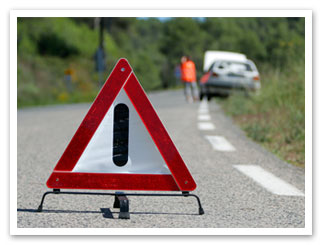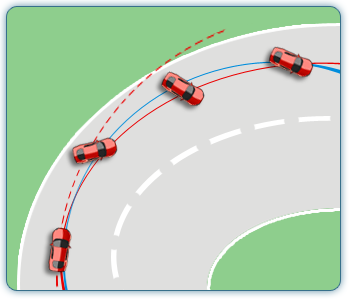What To Do After a Car Breakdown
It’s important to take good care of your vehicle and make sure it receives regular maintenance. Doing this will save you from paying for costly repairs down the line, and it will also help keep you and your passengers safe on the roadway. However, even regular maintenance does not guarantee that your vehicle will never malfunction. In this article, we’ll prepare you for the most common car problems, including a vehicle breakdown, brake failure, and blowouts.
 Breakdown
Breakdown
What do you when your car breaks down?
While most engine failures are preventable through proper maintenance, there’s always a chance that your engine could malfunction no matter how well you take care of your car. If your engine stalls in traffic, move your vehicle to the shoulder of the road if possible. Because your engine eliminates power-booster systems, you may have to move the wheel more forcefully while steering and press down harder on the brake-pedal. Shift to “Neutral” while you steer off the road.
Once you are safely off the road, try to restart the engine. If that doesn’t work and you must remain on the side of the road, make sure you are visible to other roadway users. Set up flares or other warning devices behind your car at 100 and 200-foot increments. Put your hood up, tie a white cloth to the radio antenna if you have one, and turn on your emergency lights as well as your taillights and the lights inside your vehicle if it is dark out.
Get back in your vehicle, and call for help. You should contact someone to tow your vehicle to a garage and also phone someone to pick you up.
What do you do when your car starts to skid?
An automobile skids when its tires lose their grip on the road surface. A car is most likely to skid if it is being driven too fast for road conditions or when the driver is forced to abruptly alter the car’s direction or speed.
A sudden change of speed or direction results in a sudden redistribution of the car’s weight (forward or to one side). As this occurs, the weight is lifted off some of the car’s tires to the extent that they lose contact with the surface of the road, causing a skid.
Your tires can also lose their grip on the road if your wheels actually lock during hard braking, or if you suddenly accelerate very quickly, particularly when starting from a stationary position.
There are several different types of skids:
- Braking Skid. Braking skids occur when you apply the brakes too forcefully. This can result in a 4-wheel lock where your car skids in the direction it is traveling or in a rear-wheel lock where the rear of your car begins to swing around to the front.
- Power Skid. A power skid occurs from sudden or hard acceleration.
- Cornering Skid. Cornering skids can happen when you suddenly or harshly accelerate on a curve. They can cause you to slide off the roadway or out of your lane.
- Blowout Skid. A blowout skid occurs when you lose control of your vehicle because a tire has blown out.
 Cornering Skid
Cornering Skid
If your car starts to skid, it is very important that you don’t slam on the brakes. Instead, take your foot off the gas pedal and the brake pedal. Don’t panic. You don’t want to mistakenly make a fast turn from the direction of the skid or steer too much, causing a spin. Instead, turn your steering wheel in the direction of the skid and then straighten the wheels.
If your vehicle has an anti-lock brake system (ABS), keep your foot on the brake pedal, maintaining firm and continuous pressure, while steering normally. Don’t pump the brakes. Don’t be frightened if you hear a mechanical sound or noise, and vibration or increased resistance in the brake pedal—that means your ABS is working.
Avoid skids by driving the proper speed for road conditions. Slow down for poor weather. You should also keep your tires in good condition. Over time, tires lose their treads, which help keep traction on the road. Poor tires, or tires without tread, are dangerous.
What should I do if I have to pull off the road to avoid a collision?
So, what happens if you have to pull off the road to avoid colliding with an obstacle in the roadway or another vehicle? Most roadways have shoulders where you can do just that. Some of these are paved and others are dirt or gravel. If you’re pulling off a paved road onto a different kind of terrain, be especially cautious, as these might have less traction and cause your vehicle to skid. Regardless of the type of shoulder, follow these steps to recover safely:
- Maintain control of your vehicle by slowing down and steering carefully. Do not yank the wheel or slam on the brake. Try to keep a firm grasp on the wheel and take your foot off the accelerator. Apply the brake gently.
- Before reentering the roadway, make sure to check that it's safe to do so and there are no cars in your blind spot.
- Check the flow of traffic. Wait for the right moment to pull back onto the road. If the surface of the shoulder is gravel, it will take you longer to gain speed, so wait for a larger opening.
- While signaling, pull onto the road and speed up quickly until you are going with the flow of traffic. Do not pull across more than one lane at a time. Pull into the first lane and gain speed, then signal and observe SMOG before moving into the next lane.
- Maintain your composure. No matter what kind of hazard you face, you need to be calm. If you panic, you are much less likely to choose the correct evasive maneuver and perform it safely. Stay calm and rational. Act in a controlled manner.
Take an Online Course to Learn More
If you enjoyed this article and are interested in learning more about driving-related topics, you should check out our courses on www.safe2drive.com.
We offer courses in a variety of topics including Defensive Driving and Driver Education. In addition to teaching you how to be a safe driver, our courses can help you dismiss a ticket, get your driver license, or even get an insurance discount. We also have courses specifically tailored to mature drivers (i.e., drivers age 55 and older) for insurance discounts.